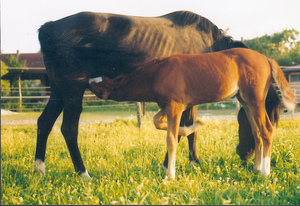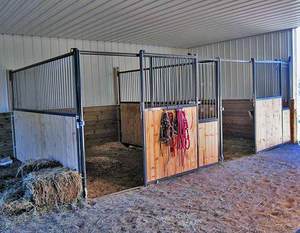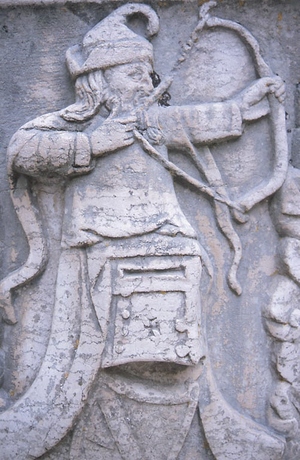Okay, let’s face it. Knowing how the stick shift works is probably the best way to drive one. But you could explain it to me ten times, and I’d still respond with, “The what fits into the huh?”
The first time I drove stick, my erstwhile companion was trying to explain why I had to do what I had to do, and I would get so involved in trying to visualize the mysterious mechanisms under the hood, that I would promptly stall.
But now that I’ve been driving stick for a while, I’ve realized it’s a skill worth learning and it gets much, much easier with practice. Driving stick is fun, and cars with manual transmissions are not only cheaper, they’re also more fuel efficient. Not to mention the mad street cred you get for your skillz.
Getting Started
There are 3 pedals. You press the clutch with your left foot, and the gas and brake pedals are the same as in an automatic car.
Adjust your seat so that your left foot can easily press the clutch down all the way to the floor. You might have to sit closer than you would in a regular car.
There are 2 things that you absolutely have to know about the car before you drive since some cars are a little different.
1. What gear do you have to be in when you turn the car off? In some cars, you can be in neutral. In others, you have to be in 1st or reverse.
2. How do you put it into reverse? Some cars have a ring on the actual gearshift that you have to pull up before you can get into reverse. The position of reverse can also be different, depending on the car.
The Gears
Most cars have the pattern marked on top of the gearshift. The pattern can vary a little, depending on whether it’s a 5-speed or a 6-speed transmission. And, of course, the position of the reverse can vary as well.
Neutral is always in the middle. When you’re in neutral and you are at a stop, you will not move unless you’re on an incline. If you switch into neutral while you’re still moving, you will continue to move until you either press the brake or naturally roll to a stop. You cannot use the gas pedal in neutral.
1st gear is the lowest gear. To shift into first gear from neutral, you have to push all the way left and then up. This is the gear you shift into when you first want to get moving. You should not stay in this gear any longer than necessary when you actually drive. Watch your RPMs. As soon as your RPMs get to 3,000, you need to shift out of 1st. This can vary in different cars, but it’s usually about 10 mph.
2nd gear is right below 1st. To shift into second from 1st, pull straight down. This gear usually starts at 3mph and goes to about 20mph.
3rd gear is up and very slightly right. This is the gear you’re going to use most for city driving. It starts at around 15 mph and goes up to about 40 mph.
4th gear is below 3rd. Pull down, but be careful not to pull toward you or you might accidentally shift into 2nd. This is for driving over 40 mph.
5th gear is up and to the right. In 5-speed cars, you usually have to push right first and then up, otherwise you’ll end up shifting into 3rd instead. In this gear, you have very little power. You can still accelerate, but it will be much slower. This gear is mostly for maintaining speed. This is your overdrive gear, and you’ll use it only on the highway.
6th gear, if you have one, is below 5th. Pull down. This is also an overdrive gear and only for the highway.
Reverse is usually all the way right and down. Don’t worry about shifting into it by accident on all but the oldest cars. Almost all cars prevent you from shifting into reverse from any gear except neutral, when you’re stopped.
The higher the gear, the lower your power to accelerate.
The first thing you should do is practice going through the gears with the car off so that you get a feel for where each is.
Push the clutch in all the way and keep it down as you practice.
Ignition
To turn the car on, you have to push in the clutch all the way. Then, you can turn the key in the ignition. Once the car is on, with the clutch in, shift into neutral. If you let go of the clutch while still in gear, the car will stall. If you are not planning on moving yet, make sure the parking brake is up and then let go of the clutch.
Shifting into 1st gear
This is the hardest part, and the one that you’ll have to practice the most. Thankfully, everything else is much easier.
1. Clutch down, right foot on brake (make sure your parking brake is down!!)
2. Shift into 1st
3. Slowly start letting go of the clutch, take your right foot off the brake and start gently pressing the gas until your RPMs are around 2. If you overrev, let the RPMs drop a little by putting less pressure on the gas pedal. If your RPMs are too high, the car will jerk. If they are not high enough, it will stall.
4. Keep the RPMs steady as you keep letting go of the clutch. You will feel the clutch engage. Once it is engaged, you will start moving. Let go of the clutch completely, but don’t drop it too fast or the car will jerk.
5. You’re moving! Press the gas
Things to remember:
Keep your motions smooth.
Don’t stay on the clutch any longer than necessary.
Practice starting on an incline. If you are on a hill, the moment you take your foot off the brake, you will start rolling back. To keep from rolling back too far, you have to shift faster. When you’re a beginner, the best thing to do is to let go of the clutch up until the point when you feel it’s about to engage (don’t go past, or you’ll stall) with your foot still on the brake. Press the gas quickly, revving to no more than 3, as you let go of the clutch smoothly. It’ll be jerky, but at least it will get you going. If you’re on a very steep hill and there’s someone behind you, you can pull up your parking brake before taking your foot off the brake, let go of the clutch and press the gas. Once you feel it is about to engage, put the parking brake down. It’s better not to get in the habit of doing this because it’s not good for your skills or your car, but it works in an emergency.
Shifting into 2nd gear
You need to shift into 2nd almost as soon as you’re moving, even if you’re going slowly. It’s not good to stay in 1st so get out of it as soon as you’re going any faster than a crawl.
1. Clutch down
2. Shift to 2nd
3. Release the clutch until it engages
4. Press the gas as you release the clutch the rest of the way
Shifting into 3rd gear and above
The higher the gear, the faster you can let go of the clutch so it’s much easier to shift.
1. Clutch down
2. Shift to 3rd
3. Release clutch. You don’t need to wait for it to engage.
4. Press gas
Watching your RPMs
Get used to watching your RPMs because that’s what you’ll rely on to know when to shift. As a general rule, it’s time to switch to a higher gear when your RPMs reach 3. The less time you spend in the lower gears, the better. In lower gears, your engine has to work harder which makes it less fuel-efficient.
Braking
This is definitely the part that worried me the most when I first started driving! But relax. You can brake just like in a regular car if you need to slow down briefly, without touching the clutch at all.
However, if your drop in speed is dramatic, you need to downshift, especially if you’re in 4th gear or above. Nothing bad will happen if you don’t, but you are going to have a problem accelerating back to your former speed. The car will shudder and you’ll pick up speed very, very slowly. That’s because you have less power in higher gears. This is not so bad in 3rd, but you should still learn how to downshift comfortably.
Coming to a complete stop
Let’s say you’re in 3rd gear and there’s a red light ahead. You can downshift to 2nd, but if you’re not comfortable with that yet, you don’t have to.
1. Brake as normal
2. Shift into neutral when you’re closer to where you have to stop (clutch down, neutral, release clutch)
3. Brake until you roll to a stop, as usual
Parking
Follow the same procedure as above, then pull up the parking brake. If your car is the kind where you have to be in 1st to turn it off, shift into 1st. Do not take your foot off the clutch until you turn the car off or it will stall. If you are parked on any kind of incline, you definitely need to leave your car in 1st for more stability. Don’t forget that it’s in gear when you turn it on again.
If you are parked in your driveway, let’s say, and it slopes down, you do not necessarily need to put your car in reverse to back out. It’ll roll back if you put it in neutral.
Reverse
1. Keep your foot on the brake
2. Clutch down
3. Shift into reverse
4. Slowly let go of the clutch until the car starts rolling backwards, taking your foot off the brake at the same rate
5. Do not let go of the clutch completely
6. Press the clutch all the way down again when you need to shift into another gear
Downshifting
Yes, this is annoying to learn, and yes, it’s not strictly necessary when you’re a beginner. But it’s very useful, and it makes driving more fun.
You need to downshift when you’re slowing down but not coming to a complete stop because a lower gear will give you more power to accelerate again.
You must never downshift from 2nd to 1st. There’s no reason to. If you’re slowing down to a crawl, you can do it in 2nd. If the car starts to shake, just shift into neutral. You can shift back to 2nd once you’re moving again.
There are 2 ways to downshift.
Let’s say you’re in 3rd and you need to shift to 2nd.
1. Press the brake until you slow down to 15 mph
2. Clutch down
3. Shift to 2nd
4. Let go of clutch
5. Press the gas as it engages
It won’t be smooth, but it will get the job done.
The real way, however, is a little harder.
1. Clutch down
2. As you’re shifting to 2nd, at the point where your gearshift is passing through neutral, rev. If you don’t rev enough, you’ll get to 2nd, but the noises aren’t going to be pretty. Same if you rev too much. Unfortunately, it’s hard to say exactly how much to rev because it varies depending on how fast you’re going. The point is to match the speed of the engine to the speed you’re going. You’ll get this with practice, but you should always rev at least 1 or 2 RPMs.
3. Release the clutch
Because it can be hard to pay attention to all these things simultaneously, you can cheat a little when you’re practicing. Instead of shifting straight to 2nd, spend a few seconds in neutral while you rev and Then shift.
Thankfully, downshifting is very easy in higher gears. If you’re going fast enough, you can shift from 6th to 5th, and from 5th to 4th without touching the gas pedal, or at least not revving it much. Your best bet is to rev anyway, but very, very gently.
What to do if you stall
The good news is that you can’t stall on the highway. The bad news is that you’re probably going to stall a lot just trying to get going in 1st. If you stall, make sure the car is completely stopped, shift into neutral and then turn it on again. Don’t try to start it if it’s still in gear.
Misshifting and how to avoid it
You’ll know you’re trying to shift into the wrong gear by the horrible grinding noise. You can’t miss it, believe me. Stop immiediately, don’t try to force it into gear. Misshifting is one of the worst things you can do to your car, so try not to do it. If you find yourself doing it too often, it’s time to park, turn the car off, and practice shifting gears again. Once you have more experience, it’ll never happen again because the movements will be in your muscle memory.
The most common misshift is when you try to shift from 2nd to 3rd and end up going for 1st instead. To avoid doing this, shift up and very slightly to the right. It’s much better to shift into 5th by accident than into 1st. You’ll know you’re in the wrong gear if you suddenly lose the power to accelerate.
If you hear the grinding noise, immediately shift into neutral. By this point, your RPMs have dropped. If you’re not going faster than 20 mph, don’t try to shift into 3rd. Shift back into 2nd, accelerate again, and then shift into 3rd.
Shifting from neutral to 2nd
Sometimes, you shift into neutral, expecting to come to a complete stop when traffic starts again. You don’t want to come to a complete stop and shift into 1st because that will take too long. If you’re still moving, just shift into 2nd instead the way you normally would.
Important Things to Remember
Do not ride the clutch!! Use the clutch only when necessary and release it as soon as you can. When you’re at a red light, shift into neutral. Do not shift into 1st, keeping your foot on the clutch, while you wait for the light to change. This is bad for your car.
Watch your RPMs. This is the best way to tell what gear you should be in, and it’s the best way to control how much you rev.
Don’t panic. It won’t take long to learn, and it will only take a couple of weeks before you’re totally comfortable driving stick. Just avoid the big hills and parking garages until you’ve had more practice.
And lastly, enjoy! Once you learn, you’ll be addicted, I promise.








